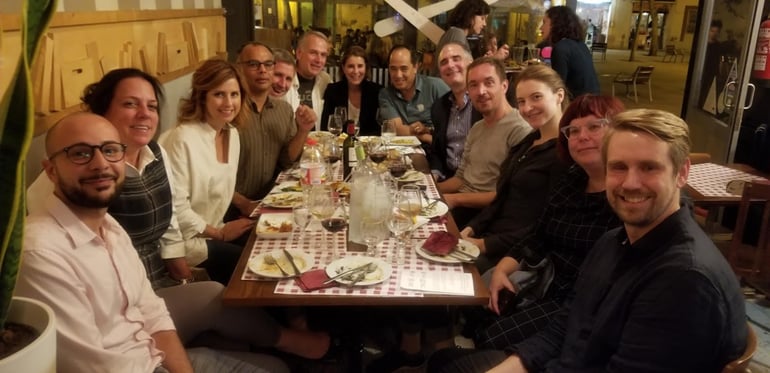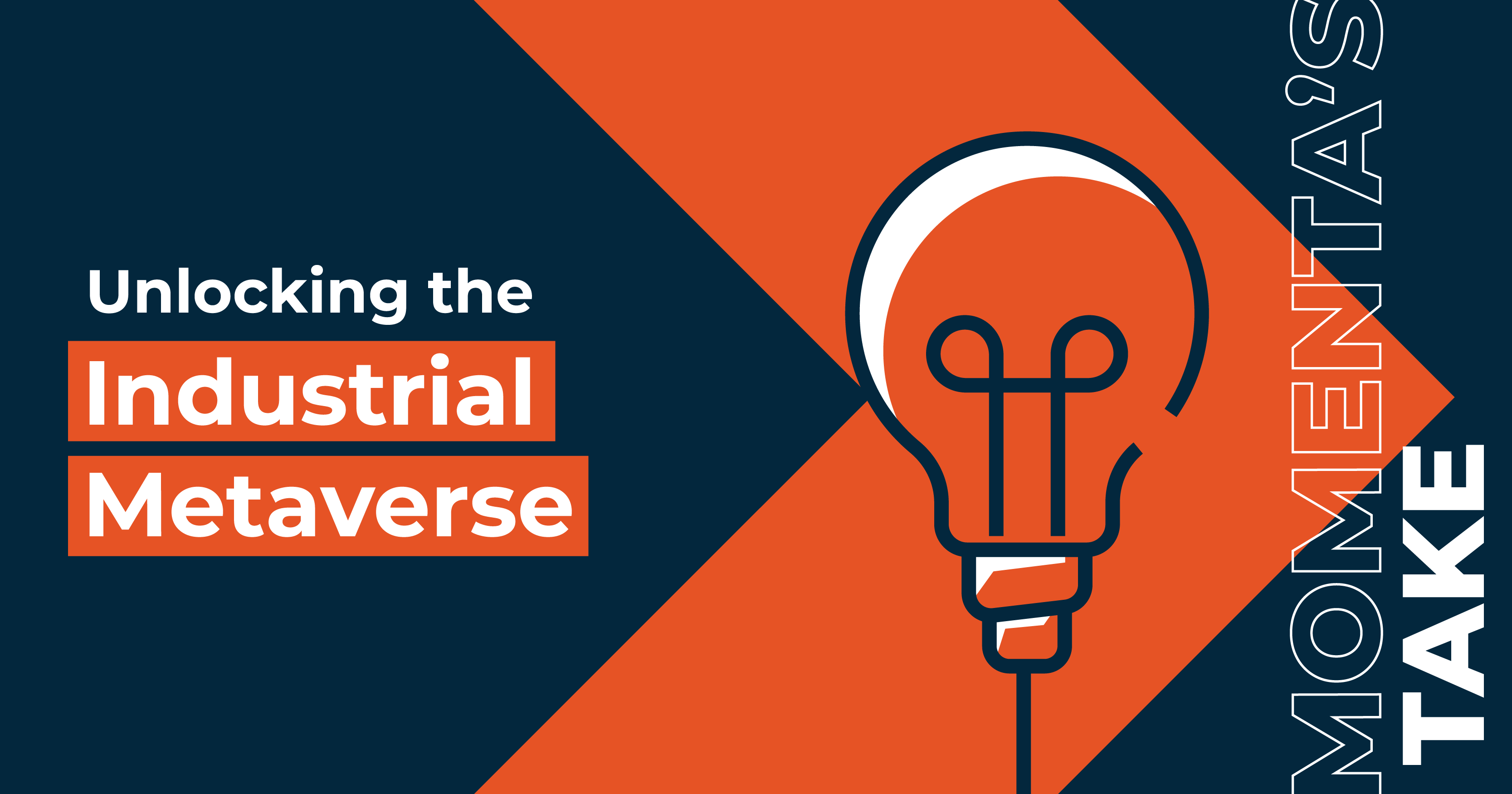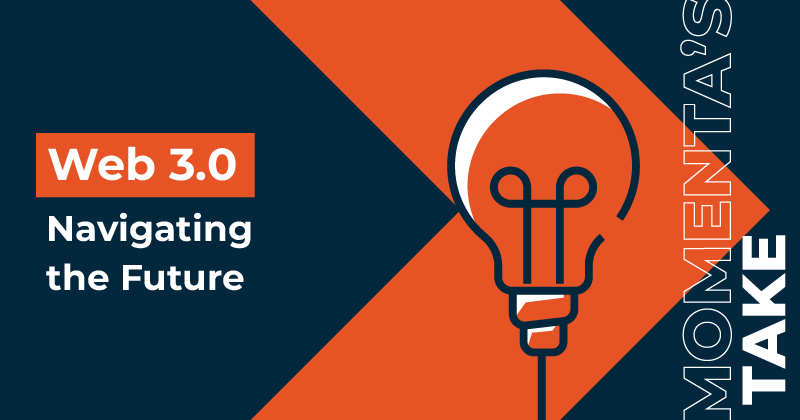The answers to your questions from our Edge Computing webinar
Ed Maguire

Last week we held our webinar "The Intelligent Edge: the next Frontier of IoT Innovation." with a stellar group of panelists and lively and informative discussion. If you were unable to attend, you can access the recording and presentation. As a follow-up we’re publishing some responses to some of the many questions we received during our event. Momenta’s Jim Fletcher and edge expert Paul Anderson provide their views on a number of topics. Edge computing is a hugely relevant practice area for Momenta, and we welcome inquiries from vendors and users regarding developments and use cases in this space. - Ed Maguire
What is the difference between Edge and Fog?
What’s the difference between edge and fog? Fog refers to the network connections between edge devices and the cloud. Edge, on the other hand, refers more specifically to the computational processes being done close to the edge analytics devices. – Paul Anderson
According to the OpenFog Consortium, “Edge runs specific applications in a fixed logic location and provides a direct transmission service without data analysis. Fog works with edge to run applications in a multi-layer architecture that decouples and meshes the hardware and software functions, allowing for configuring / reconfiguring for different applications while performing intelligent transmission services with computing/storage/communication capabilities along the cloud to things continuum.”

Source: OpenFog Consortium
What about the applications development and management side on edge intelligence including all the software infrastructure needed?
Ideally application development and management would use the same tools and best practices found in IT infrastructure development today. The infrastructure can also mimic those found in Cloud/IT today (Containers, threads, device management frameworks, etc). – Paul Anderson
Why not combine the Intelligent controller and the EDGE reducing one extra layer?
That is exactly what the "Embedded Edge" use case is. In some cases it does make sense to combine the layers. In other cases, such as dealing with legacy controllers, working with controllers that are certified for use in safety critical applications, and where there is a need for higher level control/orchestration of multiple controllers, having a separate layer is a better choice from a safety and reliability standpoint. – Paul Anderson
How do you propose to ensure security at a widely distributed edge?
As with any IIoT solution, security needs to be designed in from the start. That includes, physical security, transport layer security, data encryption, key management, access rights and controls, and others. Many of the common security best practices currently being used within IT can be directly applied to Edge Computing. And the Edge analytics device itself can be used to protect other parts of the solution, including devices and the cloud by being used as a security monitoring and control device.
No security strategy works if there is not a holistic approach and consistent application of technology, configuration, and operations. At the same time, perimeter security applied at a macro level will likely not be sufficient given the complexity of IIoT solutions, whether or not Intelligent Edge is included or not. Each layer does require hardening, and the whole solution needs to be looked at. – Paul Anderson
If the analytics can be performed in the cloud, what is the benefit of an Edge approach? Is it purely to achieve a closer to Real-time result?
Real time results are only one benefit. The other benefits are the ability to operate independently when the network is down, to drastically reduce data transfer rates, and the ability to control what data stays on-site vs is delivered to the cloud. – Paul Anderson
Is there a central organizing or controlling entity in a hive? Most of industrial have monolithic applications, what will help break down those mono-lithics applications to leverage the "hive" approach?
A hive is an aggregation of nodes to provide a specific function or solution. The underlying functions of the hive, and the roles of the nodes within the hive are determined by the specific functions being provided. As an example, a group of nodes providing a Blockchain-derived function would have no central controlling node, however a solution which was more hierarchical based might have a specific node designated as the controller for that function.
It is key to remember that the nodes within the hive can be physical nodes (dedicated hardware) or a logical overlay across a series of nodes. In some cases, the underlying hardware might provide services for multiple hives. – Jim Fletcher
How are current solutions different or better than OSIsoft PI, SAP xMii and others?
As mentioned in the Webinar, the concept of Edge is not new. M2M, SCADA, and On Premise systems have been around for a very long time, and so has the idea of data collection, analytics, and orchestration. The primary difference is in the set of design assumptions, and the method of application using the Intelligent Edge. The state of the art of distributed computing, communications, storage, and analytics has changed significantly with time, allowing the application of state of the art IT concepts to be applied within the OT context, including on the Intelligent Edge. - Paul Anderson
For the embedded edge device, is there opportunities for machine to machine distributed or cooperative controls capabilities? Is it too taxing for embedded edge devices? Or better for a single edge controller?
Again, it depends on the use case and the edge devices. The concept of virtualizing computing loads and controls does allow for greater design flexibility, resilience, and reliability of solutions. - Paul Anderson
Can an analytics company be just an Edge consumer or must have Edge computing capability as well for a blended offering?
The best analytics capabilities are those that can be consistently and seamlessly applied in the cloud, on the edge, or a blend of both. The core foundation of that capability starts with a uniform execution environment, standardized data structure and flow, and supervisory capability to allow analytics to be deployed and maintained in the cloud, on the edge, or a hybrid of both. There will always be use cases where "cloud only" and "edge only" is the right answer, but capability on both and the ability to mix and match as required to optimize the design is the best. - Paul Anderson
Is it important for edge devices to be open in architecture?
There are different aspects to "openness". There are the interfaces, the ecosystem, and the code itself. The most important aspects for edge is interoperability between edge/device and edge/cloud, and an open and strong ecosystem of hardware and software. The issue today is that there are multiple vertically integrated solutions that include edge capability being offered by cloud service providers, large enterprise application providers, and even hardware providers with very little interoperability between them. As has happened in the IT space, eventually there will need to be standards at the API/Data Exchange/Application Execution level for the whole ecosystem to work efficiently. – Paul Anderson
What is the feasibility to employ AI/Machine Learning computation on the edge, as opposed to on the cloud? Would GPUs be sufficient?
AI and Machine Learning can certainly be deployed on the Edge, and is already being done. As to the question of the compute requirements for doing AI/ML, that is highly dependent on the uses case. For example, machine learning algorithms that are being used on relatively low sample rates (1-10 samples/sec), most common ML algorithms will run without issues on a standard ARM processor, and require no GPU. For high sample rates (1K-10K samples/sec) and complex algorithms (vibration analysis, failure prediction, etc), a GPU or higher powered CPU will likely be required. - Paul Anderson
Stay tuned for our upcoming white paper on the Intelligent Edge. Our next Webinar will be on Emerging Technologies; IoT, AI, Blockchain technologies as they relate to Industrial IoT and much more.



